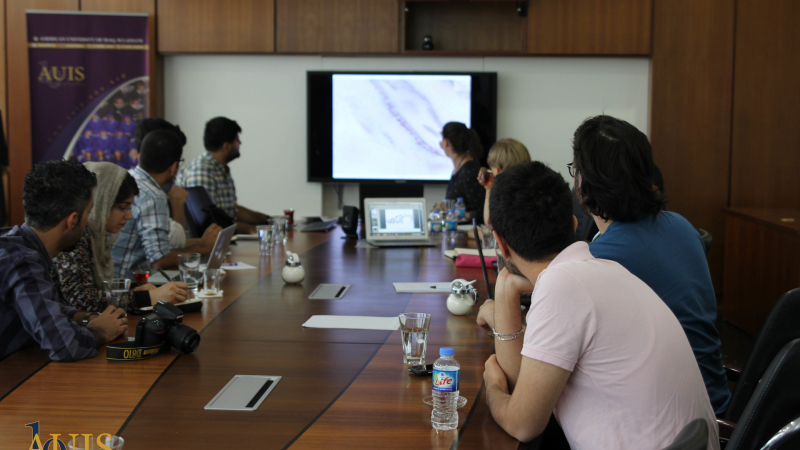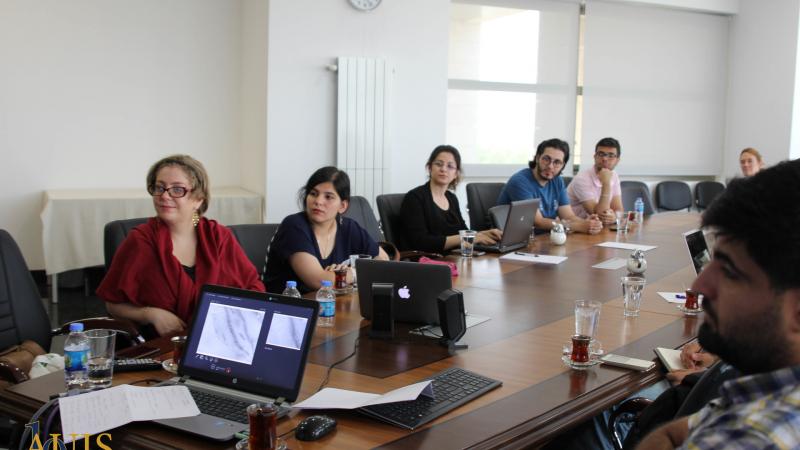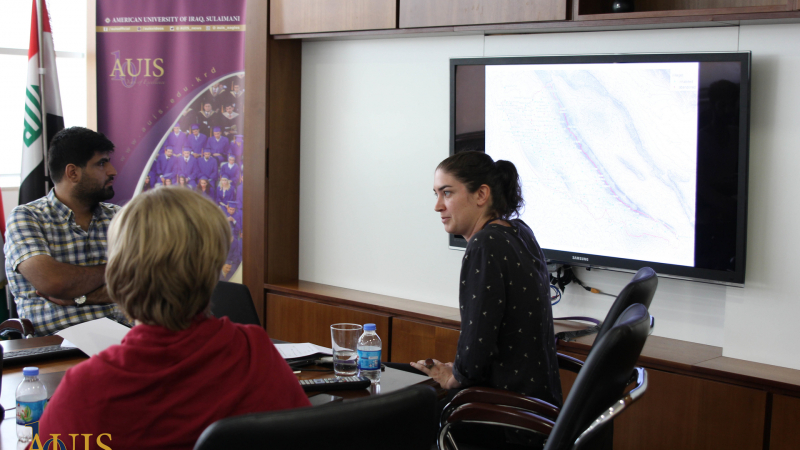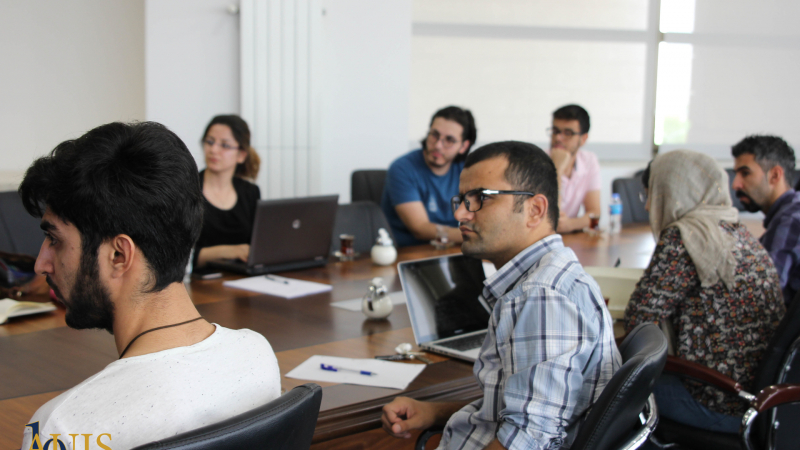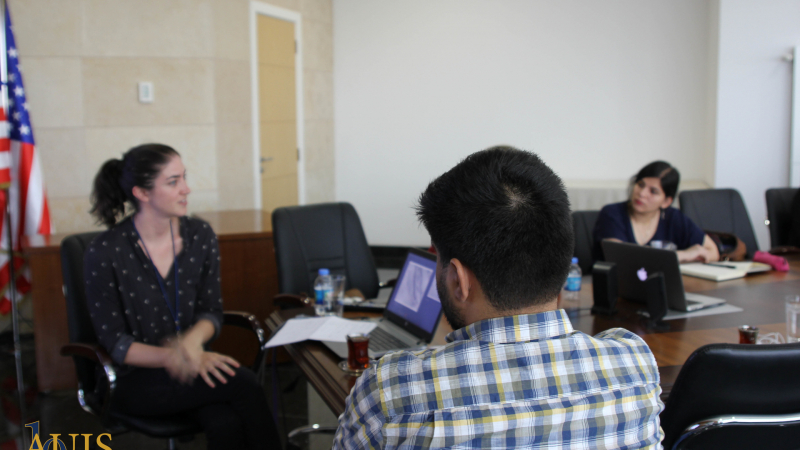On July 6, 2017, IRIS hosted a symposium with Camilla Insom, anthropologist and Ph.D. candidate (Missione Archeologica Italiana nel Kurdistan Iracheno della Sapienza, Università di Roma & IsIAO), who met with AUIS students and faculty members to explore the historical transformation of Sufism in the Kurdistan Region of Iraq (KRI), with a particular focus on the Sufi order of Qadiriyya. She has, since 2013, worked on documenting Sufi shrines in the region.
Insom opened the discussion with an illustration of the Qadiriyya family bloodline and highlighted its religious significance in the KRI, contextualizing historical developments within the traditional and contemporary religious sentiments of Qadiriyya. Insom explained the significance of the 1980s and 1990s as a turning point when the identity of the Qadiriyya order started to gradually shift from religious to tribal. Today, while the Qadiriyya order remains of religious significance for some, she concluded, it has become a more secular, tribal identity for the majority of its members.
The discussion with participants in attendance then focused on the challenges of addressing religious continuity and change in the context of the KRI, as well as on the political and social importance of the topic.

